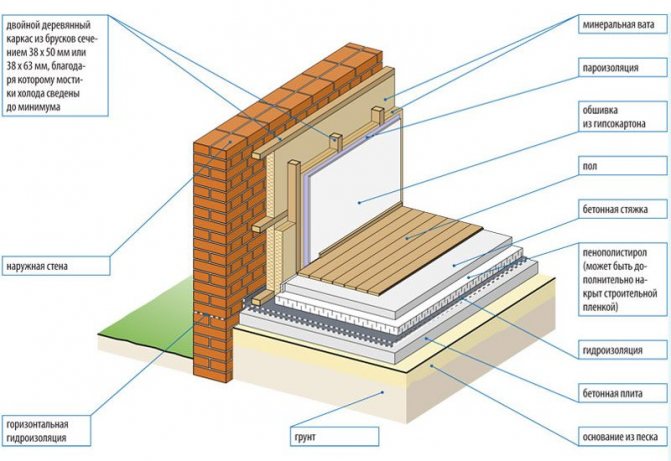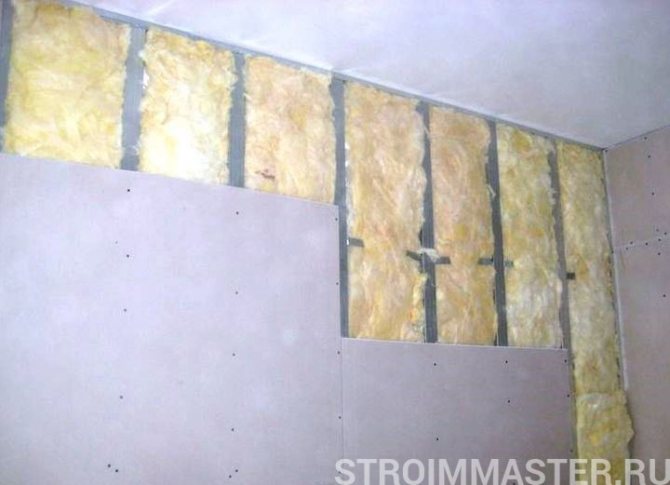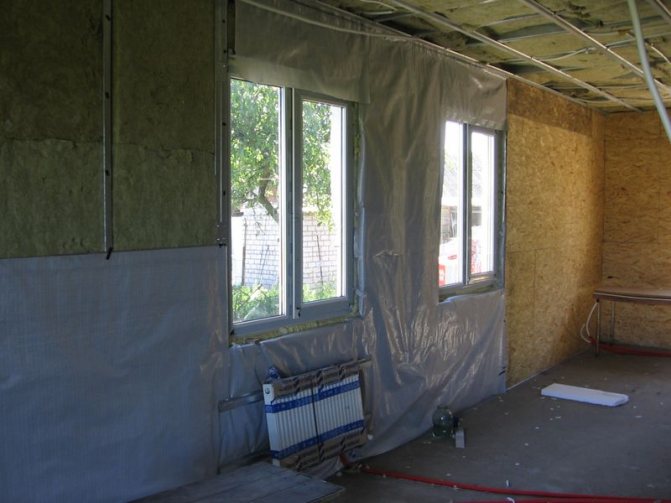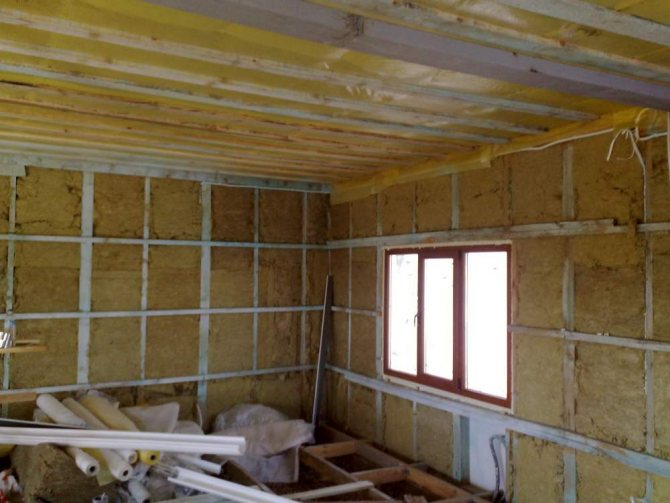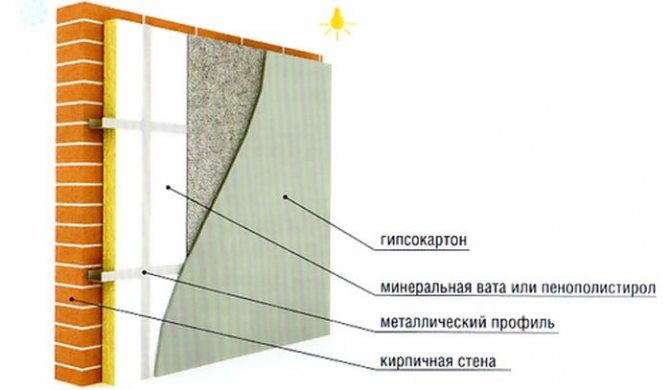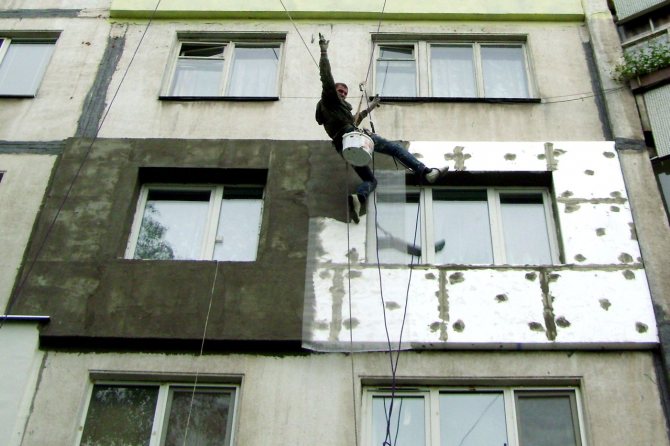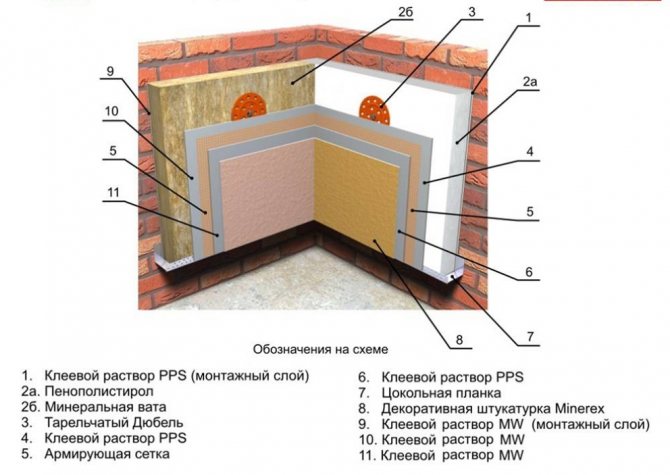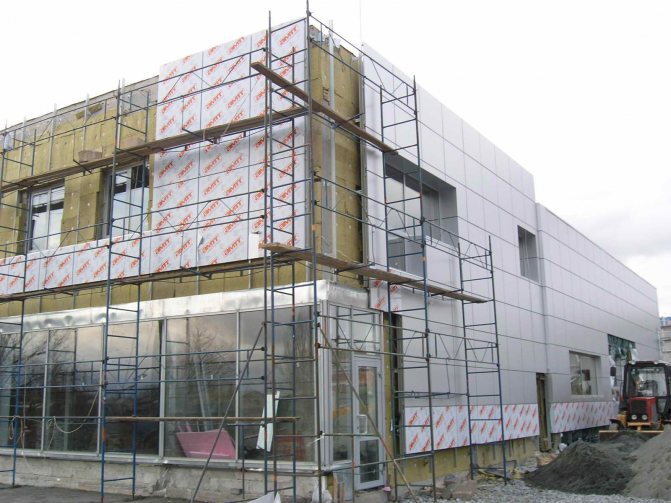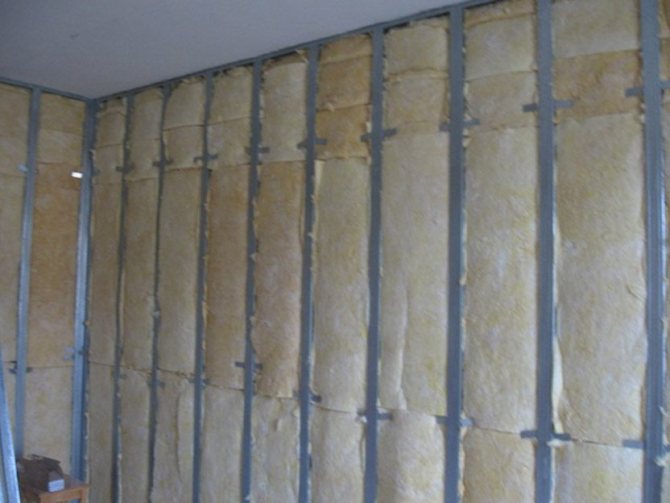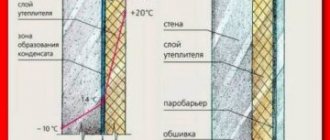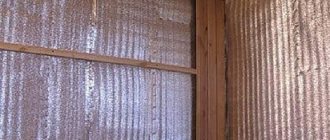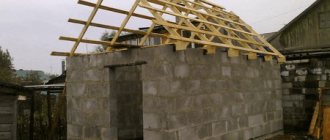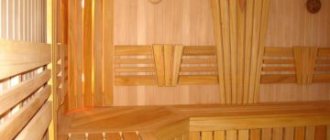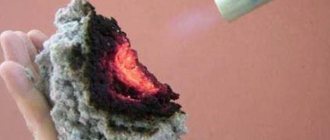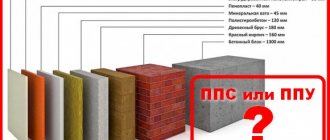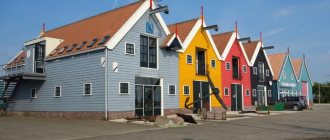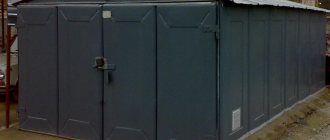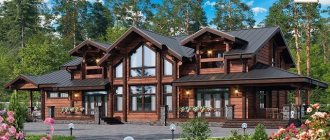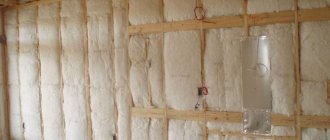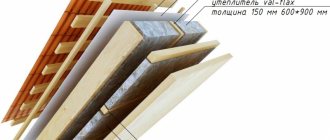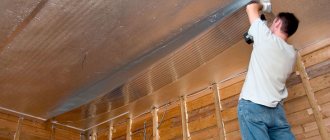The construction of wall bearing partitions entirely of this material in modern construction is considered a large and not too reasonable luxury. Although most of the reference literature recommends making load-bearing wall partitions of brick more than one meter. This will help the building have good cold resistance.
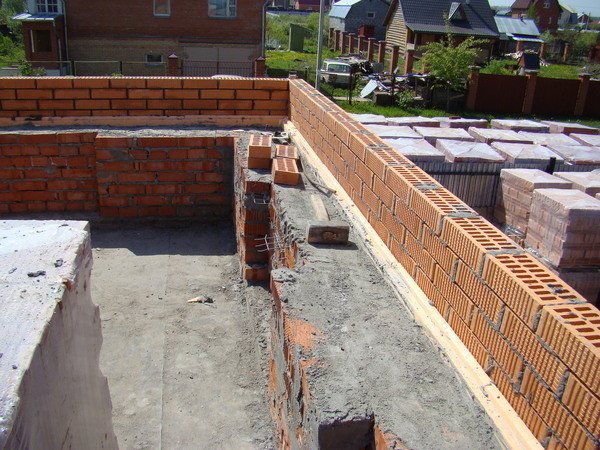
Using a combination of brickwork with insulation allows you to achieve: significant savings in building materials, reducing the load on the foundation, reducing heat loss by almost half.
It is for this reason that brickwork with insulation is the most used option today and is accepted as a way to efficiently conduct construction.
The relevance of this type of styling
Today, such a branch of the national economy as construction is developing at a rapid pace throughout the world. Hundreds of new buildings and structures are built annually. The most favorite and common building materials are the following: concrete, reinforced concrete, plastic, metal, metal-plastic, brick. Brick is undoubtedly the most practical of these. Currently, brickwork is constantly being modernized, more and more new ways of it appear. For these purposes, different types of bricks are used: solid, hollow, single one and a half, double. Most often, brick is used for the construction of residential and public buildings, where the most important thing is to maintain an optimal indoor climate.
Bricklaying with insulation has become very relevant today. It arose in the middle of the last century. Then, moss, sawdust, peat were used as insulation. In the modern world, they are already ineffective and have been replaced by more modern materials. Insulation can be used in almost any type of construction, where timber, concrete panels, brick walls are used as enclosing structures. The last option is the most relevant. Let us consider in more detail how brickwork with insulation is carried out, the masonry technique, the advantages of this method.
Thermal insulation from the inside with mineral wool - mistakes with serious consequences
Insulation from the inside with mineral wool is similar to sabotage in order to cause maximum damage to the structure and people. Standards require, experts recommend insulating only outside the building.
And insulation from the inside is an extreme forced measure, and it must be carried out according to certain rules. Can this be done using mineral wool with special measures to protect the structures?
Let's decide in order - how to properly insulate, how mineral wool should be used, what are the common mistakes and opinions on this matter.
Lack of insulation from the inside - freezing
When insulated from the inside, not only with mineral wool, but also with any heat insulator, the wall turns out to be protected from heat, so its temperature decreases.
Moreover, with a sufficiently large amount of insulation, the wall can freeze through. Freezing a structure is always bad, because for any material there is a finite number of freezing cycles before it breaks down. It is even worse if the wall freezes in a damp state. In this case, it will be so.
Humidification, dew formation
Dew point - the temperature at which dew falls out of the air, will be located directly on the wall. More precisely, condensation can begin to fall out in the insulation, but the cold surface of the wall will also condense water on itself.
And there will be a lot of water, it will also flow to the wall from the insulation, especially if you use mineral wool.
An excellent "greasy" mold and large colonies of putrefactive microorganisms will grow on a wet wall.
All this will be inside the room, spreading from the wet crumbling wall to the ceiling, floors ... Residents will need means of salvation.
Finally, when insulated from the inside, the heat insulator and trim will take up part of the usable space. The useful area of the room will decrease by about a square meter. It's a lot.
The above disadvantages can be circumvented and leveled (except for eating up the usable area). But only if mineral wool is not used for internal insulation.
Mineral wool is moisturized, accumulates water
Mineral wool is not suitable for insulation from the inside, even in forced situations due to its properties. This insulation perfectly permits water vapor through itself and can accumulate water inside, becoming just wet.
It is clear that when insulated from the inside, the insulation will get wet due to the dew point in it and the lack of ventilation. The consequences are known.
The material consists of the smallest fibers of basalt or other minerals. It is also made from blast furnace slags and silicates (glass wool), these samples are cheaper.
To bind the fibers together, phenol-formaldehyde resins are used, the same as in the production of chipboard.
Good thermal insulation of mineral wool owes to the air trapped between the many interwoven fibers. If the air is displaced by water, at least partially, then the required thermal insulation qualities will disappear.
Even a slight increase in humidity (by 2%) of this insulation leads to a significant decrease (up to 8%) in its thermal insulation properties.
Inside the room, mineral wool is harmful
Some of the fibers are microscopic in size, are carcinogenic (cause cancer of the respiratory system). Resins evaporate, and when heated, they are significantly harmful to health. The use of mineral wool indoors is, in principle, not prohibited.
But it must be reliably isolated from the living space, it is desirable that the fumes from it do not fall inside the house, but are discharged outside. The spread of mineral wool fibers around the house (apartment) is not allowed. Some experts, due to the potential health hazard, generally recommend using mineral wool only outside the premises.
Work with mineral wool should be carried out only with personal protective equipment.
Why do they want to insulate from the inside
Why is the desire to insulate from the inside great?
- It seems that this is easier and cheaper to do than outside (although in the end it is much more profitable to insulate outside).
- Many people want to use mineral wool at the same time - at first glance, it is not expensive and it is not difficult to do without wet processes (in fact, it is more often to insulate with other heaters and it is easier and cheaper).
- In addition, how to insulate from the inside with mineral wool can be read on the Internet (information is often incorrect).
What are the wrong ways
There are several common opinions about the creation of internal thermal insulation.
- Mineral wool needs to be protected with a vapor barrier from all sides - and the problem of humidification is solved.
Pulling the plastic wrap straight over the wall, and then over the mineral wool, the problem of humidification is not solved. The owners can subsequently cut the film and endlessly wondering to drain the water from the insulation. Steam will still penetrate behind the film, and even through it, and condense there due to the temperature difference - after all, there is no ventilation. The wall will be dampened under the plastic. - Build a plasterboard partition - and under it a waterproofer. The wall will get wet, but will not get into the room.
Generally…. And why all this if the insulation gets wet and does not fulfill its functions? - We build a partition with mineral wool at a distance of 5 cm from the wall.We make ventilation along this gap - we supply air through the holes at the bottom and bring it out through the upper ones.
A super project has the right to life as an invention without economic sense - a large consumption of space, materials, a very unprofitable option for internal insulation. - There are even recommendations to dry the wall and insulation with electricity. All this is of course interesting, but it is better to do without such solutions altogether. It is, in principle, possible to insulate from the inside, how to do this, you can find out on this resource ...
How is mineral wool used
Mineral wool can be used to insulate all structures of the house, except for the foundation. The classic application is the thermal insulation of the roof above the attic floor. There the mineral wool is placed between the rafters, it is this insulation that is best combined with wood - it does not interfere with the "breathing" of wood.
You can also insulate walls from any materials outside the building. Wherever mineral wool is used as a heater, its ventilation should be organized. More precisely, a ventilation gap must be made above the layer, on the side of the reduced partial pressure.
At the same time, the heat insulator itself is covered with a diffusion (vapor-permeable) membrane, which levels the wind pressure and prevents the spread of dangerous fibers.
From the inside (from the side of the steam source), the mineral wool can be fenced with a special vapor barrier according to design solutions. But when insulating a wall, vapor barrier is not used. It is enough that from the street side the air will dry the insulation moving along the vertical ventilation gaps. Also, walls with interior decoration always restrain the flow of steam into the insulation.
Mineral wool is the best-selling insulation. You just need to apply it correctly, and the effect will be great.
Great durability, the ability to effectively drain the entire structure and increase its durability, the ability to change the insulation without destroying the materials in the ventilated facade system, and others are appreciated. As you can see, it is possible and necessary to insulate with mineral wool. Not the walls inside the room.
Types of insulation and requirements
Bricklaying is a rather serious and difficult task.
Most often, insulation inside brick structures is carried out using mineral wool, expanded polystyrene, glass wool.
Some craftsmen fill the space between the walls with concrete or cover with slag. This option also has its advantages, the main one being that this method of masonry increases the strength and durability of the structure. Any insulation must meet the following special requirements.
First, it must be resistant to deformation. This property is especially important. So, under the action of any natural factors, as well as under the force of gravity, it can change in size and shape.
Secondly, it is moisture resistance. Despite the fact that the insulation is carried out inside the structure, moisture can get inside, which often leads to deformation and destruction of the material. And the latter, in turn, will affect the thermal insulation properties of the enclosing structure. Warming is carried out only with those materials that do not pass or absorb moisture. In addition, excess moisture can cause condensation to form. Fiberglass is most optimal for flexible connections between fences, since it has low thermal conductivity, high strength and does not allow moisture to pass through. There is one more universal insulation - this is air.
Advantages and disadvantages of mineral wool
The high and constant demand for mineral wool provides a number of benefits, as outlined below.
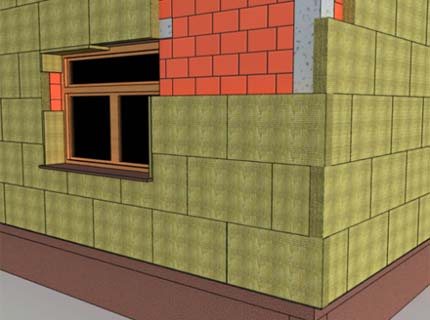

Dignity
- exfoliates well;
- has a low level of thermal conductivity;
- resistant to extreme temperatures;
- belongs to the class of non-combustible materials;
- resistant to mechanical stress;
- does not deform when compressed;
- does not break;
- water-repellent;
- has a high level of noise absorption;
- biologically stable;
- not susceptible to chemicals;
- easy to install.

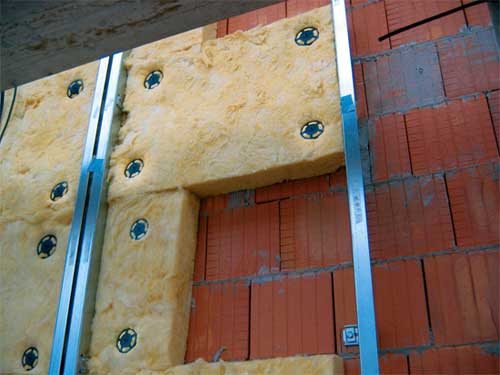
Important! Due to its incombustibility, mineral wool is relevant not only in the construction and insulation of residential buildings, but also in technical and storage facilities.
Disadvantages of mineral wool
- contains carcinogenic fractions;
- contains phenol-formaldehyde resin;
- releases harmful substances into the air;
- the dust from cotton wool is harmful to the respiratory system.

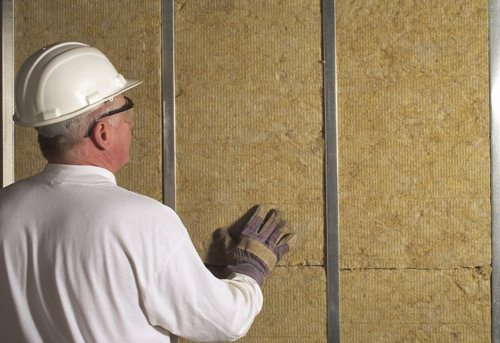
Important! The release of the listed hazardous substances occurs only when exposed to sufficiently high temperatures. Under normal conditions, working with mineral wool is no more dangerous than other insulation and building materials.
Well masonry
Wall insulation is often used for lightweight brick laying. This reduces the main load on the building. In addition, this method allows you to save materials, increase the percentage of sound insulation and thermal insulation. Warming in this case is of two types. In the first case, two brick walls are being erected, and the voids between them are filled with insulation in an even layer. In the second case, only one wall is made, and then insulation is attached to it. Well masonry is most often used nowadays. It is carried out as follows: first, the inner load-bearing wall is erected with ordinary bricks, after which the outer wall is built with a thickness of half a brick.
The next step is to install the dressings in several rows. For this, you can use metal rods. You can also use another type of masonry, in which the voids are filled with slag or concrete. The walls are erected half brick thick. In this case, the slag must lie down for some time (six months).
Three-layer masonry with and without a gap
With this method, heat-insulating panels are laid in rows between the supporting structures, they are fixed with anchors that are embedded in the wall.
To prevent the formation of condensation, a vapor barrier is required in this case. The face layer is laid out of ordinary facing brick or stone. There is another way in which an air gap is made. This method is the most optimal, since it helps to prevent the formation of condensation to a greater extent. The ventilation gap helps the insulation dry out. With this method, a load-bearing inner wall is first built from ordinary bricks. Thermal insulation materials are mounted on wall anchors.
In this version, flexible connections with clamps are used, which are needed to tie the insulation panels to the wall and create an air layer. Washers with a stainless coating are used in the role of retainers. The disadvantage of this method is that it is very time consuming.
Material service life
For work on the insulation of facades, mineral wool of medium density is used, the service life of which is at least 25 years. What affects the operational life of the material:
- exposure to moisture;
- thawing and freezing of the moistened material;
- air pressure in the ventilation gap.
Under the influence of the above processes, mineral fibers can be destroyed.
High density mineral wool, which is covered with decorative trim on top, can last more than 40 years.
Insulation of wall surfaces is carried out at the stage of building a house or when an already purchased dwelling has insufficient thermal insulation. Additional protection of the walls does not allow them to deform, helps to withstand temperature extremes. In this case, you can use cotton wool of different structures and can be combined with other materials.
Equipment and tools
Insulating bricks will require tools. You can insulate it inside if you have insulation (cotton wool, slag or concrete).In addition, you will need a vapor barrier. For the masonry itself, it is important to have in stock a solution based on sand and clay or cement, bricks, a mixing container, a building level, a trowel, a trowel, and shovels. You may need a ladder or grinder to cut bricks. It is advisable to insulate bricks in a dry and warm season in order to avoid moisture that can accumulate between the walls. You can insulate the wall either yourself or hire a team of specialists for this.
As mentioned above, moisture can accumulate inside the wall, so it is important to use only moisture-proof materials. The cheapest of these are glass wool or slag. The insulation should be laid flat.
Conclusions and recommendations
Based on the foregoing, it can be concluded that when laying bricks, it is best to use insulation. It must meet the following requirements: be moisture resistant and resistant to deformation. It must be inside the structure, between the load-bearing walls. You can insulate the walls with various materials: mineral wool, slag, concrete, glass wool. There is one more very good insulation - this is air. Laying should be done in several ways. The most common of them is a well, three-layer with and without an air gap.
In any case, a ligation is made between the walls, it is carried out using metal pins that are attached to the anchors. The space between the walls is filled with an even layer of material. To insulate a wall, you need equipment and tools. You can buy them at any specialty store. Therefore, insulation of a brick wall and thermal insulation is not difficult, but requires certain knowledge and skills.
1pokirpichy.ru
When asked what to build a house from - wood, brick, concrete, or their many and varied combinations, everyone answers in their own way. The choice depends on many factors, among which personal preferences often play a much more significant role than practical considerations. We will try to dwell on the practical points and will proceed from the fact that the decision has been made to build a house out of bricks. The main advantage of a brick building is its undoubted strength and unlimited service life, of course, subject to proper construction and competent operation.
Thicker doesn't mean warmer
The thickness of the main brick walls is always (well, or almost always) a multiple of the size of half a brick, but it is never less than 25 cm, that is, one of its length. It is well known from the richest construction practice that even a single brick wall is capable of carrying any evenly distributed load that arises in one- or two-story houses from the structures above. Thermal calculations show that at a temperature “overboard” of –30 ° C, and it is this temperature that is not uncommon in winter in most regions of the central part of Russia, in order to preserve heat in a house, the thickness of its outer walls (with continuous masonry without voids and on cement-sand mortar) should be at least 160 cm.Walls made of silicate bricks will be even thicker.
Ordinary red bricks are solid and hollow.
For exterior walls, it is better to use hollow walls, the air cavities of which significantly improve the heat-shielding characteristics of the structure. In addition, the masonry itself must be carried out with the formation of voids, wells, widened joints filled with heat-insulating material, use effective modern insulation and the so-called warm masonry mortars. An equal or even more serious effect can be achieved using various kinds of insulation, masonry with the formation of voids, porous bricks.
Where does the heat go?
An important question that interests many potential customers is something like this: "Where should the insulation be located on the walls - inside the room, outside or in the body of the masonry?"
The greatest losses of heat in houses, including individual ones, were at windows 20 years ago. With double glazing so widespread until recently, the specific heat flux through the windows is 4-6 times higher than the heat flux through the walls. And this despite the fact that the area of windows is rarely more than a fifth of the total area of the enclosing structures. Let's make a reservation right away that the use of multi-chamber PVC profiles with three- or four-chamber double-glazed windows significantly reduces heat losses. 9-10% of the heat leaves the house through the roof and the same amount goes into the ground through the basement. And 60% of losses are accounted for by non-insulated walls.
Consider three options for wall construction: solid without insulation; with insulation from the side of the room; with external insulation.
The temperature in the house, according to the current standards determining the level of comfortable living, should be equal to + 20 ° С.
Measurements carried out by experts show that at an outdoor temperature of -15 ° C, the temperature of the inner surface of an uninsulated wall is about 12-14 ° C, and the outer surface is about -12 ° C. The dew point (the point at which the temperature corresponds to the beginning of moisture condensation) is located inside the wall. Considering that part of the enclosing structure has a negative temperature, the wall freezes through.
In the presence of thermal insulation located on the walls inside the room, the picture changes significantly.
The temperature of the inner surface of the wall (more precisely, the inner side of the insulation) in such a structure is approximately + 17 ° C. At the same time, the temperature of the masonry from the inside of the building turns out to be about zero, and from the outside it is slightly lower than the temperature of the outside air - about –14 ° С. A house with such internal thermal insulation can be warmed up rather quickly, however, brick walls do not accumulate heat, and when the heating devices are turned off, the room is rapidly cooled. But something else is worse: the dew point is between the wall and the layer of thermal insulation, as a result, moisture accumulates here, mold and mildew may appear, the wall still freezes. However, heat losses are somewhat reduced compared to non-insulated construction.
Finally, the third option is external thermal insulation.
The temperature of the wall surface inside the house becomes slightly higher: 17–17.5 ° С, while outside it rises sharply - to the level of 2–3 ° С. As a result, the dew point moves into the insulation layer, while the wall itself acquires the ability to accumulate heat, and heat losses from the room through the enclosing structures are significantly reduced.
Layered masonry
The easiest way to increase the thermal insulation properties of brick walls is to leave cavities in them, because air is an ideal natural heat insulator. Therefore, for a long time in the body of a wall made of solid bricks, closed air layers 5–7 cm wide have been made. This, on the one hand, reduces brick consumption by almost 20%, and on the other hand, reduces the thermal conductivity of the wall by 10–15%. This type of masonry is called well. Air, of course, is an excellent insulation, however, in a strong wind, such walls can blow through the vertical seams of the masonry. To prevent this from happening, the facades are plastered outside, and various insulation materials are laid in the air voids. A variety of well masonry, called layered, is now widely used: a load-bearing brick wall, then a heater and an outer layer of facing brick.
Thermal insulation in layered masonry, as a rule, are plates of mineral wool (based on stone fiber or staple fiberglass) or expanded polystyrene, less often from extruded polystyrene foam (due to its high price).
All materials have similar thermal conductivity coefficients, so that the thickness of the insulating layer in the wall will be the same, regardless of the type of insulation chosen (the thickness of the layer is determined not only by the characteristics of the thermal insulation, but also by the climatic zone where the construction is underway). However, fibrous materials are non-combustible, which is fundamentally different from expanded polystyrene, which is combustible. In addition, unlike expanded polystyrene, fibrous plates are elastic, so that during installation it is easier to press them tightly against the wall. Certain difficulties in the use of expanded polystyrene in layered masonry are also caused by the low vapor permeability of this material. At the same time, expanded polystyrene is about four times cheaper than mineral wool, and this advantage for many customers compensates for its disadvantages. We add that, according to SP 23-101-2004 "Designing thermal protection of buildings", when using combustible heaters in the building envelope, it is necessary to frame window and other openings around the perimeter with strips of non-combustible mineral wool.
The device of any type of insulation system requires a thoughtful calculation of its vapor permeability: each subsequent layer (from the inside to the outside) should allow water vapor to pass through better than the previous one. Indeed, if there is an obstacle in the way of the steam, then its condensation in the thickness of the enclosing structure is inevitable. Meanwhile, in the case of a popular solution - a wall made of foam blocks, fibrous insulation, facing bricks - the vapor permeability of foam blocks is quite high, for insulation it is even higher, and the vapor permeability of facing bricks is less than that of insulation and foam blocks.
As a result, steam condensation occurs - most often on the inner surface of a facing brick wall (since in winter it is in a zone of negative temperatures), which entails negative consequences. Moisture accumulates in the lower part of the masonry, eventually causing the destruction of the brick in the lower rows. The insulation will get wet throughout its entire thickness, and, as a result, the service life of the material will be reduced and its heat-shielding properties will significantly decrease. The enclosing structure will freeze through, which will lead, in particular, to a decrease in the effect of the use of the insulation system, to deformation of the decoration of the room, to a gradual displacement of the zone of condensation falling into the thickness of the bearing wall, which can cause its premature destruction.
To one degree or another, the problem of steam transfer is relevant for layered masonry with any type of insulation. In order to avoid wetting the thermal insulation, it is recommended to provide two points.
Firstly, it is necessary to create an air gap of at least 2 cm between the insulation and the outer wall, and also leave a row of holes about 1 cm in size in the lower and upper parts of the masonry (the joint not filled with mortar) in order to achieve an inflow and exhaust of air to remove steam from the insulation ... However, this is not a full-fledged ventilation of the structure (in comparison, for example, with a ventilated facade system), therefore, secondly, it makes sense to make special holes to drain condensate from the layered masonry in its lower part.
An important feature of layered masonry is the use of heat-insulating materials with sufficient rigidity and their reliable fixation so that they do not settle over time. For additional fastening of the insulation and the conjugation of the external and internal brick layers with each other, flexible connections are used. They are usually made of steel reinforcement.
In recent years, porous large-format ceramic stones have been increasingly used in individual construction for the construction of walls. During their manufacture, organic and mineral materials are added to the composition of ceramics, which contribute to the formation of closed pores during the baking process.As a result, such stones become 35–47% lighter than solid bricks of the same size, and due to the porous structure, their thermal conductivity coefficient reaches 0.16–0.22 W / (m · ° С), which is 3-4 times higher. than solid clay bricks. Accordingly, walls made of porous stone can be much less thick - only 51 cm.
Brickwork, due to the high heat capacity of the material, has a significant thermal inertia - the walls warm up for a long time and cool down just as slowly. For permanent residences, this quality is undoubtedly positive, since the temperature in the premises usually does not have large fluctuations. But for cottages, which the owners visit periodically, with long breaks, the thermal inertia of the brick walls already plays a negative role, because they require a lot of fuel and time to warm them up. The construction of walls of a multilayer structure, consisting of layers of different thermal conductivity and thermal inertia, will help to remove the severity of the problem.
www.zaggo.ru
Insulation of the walls of the house
Insulation of the walls of the house is an important issue when solving the problem of keeping warm in living quarters.
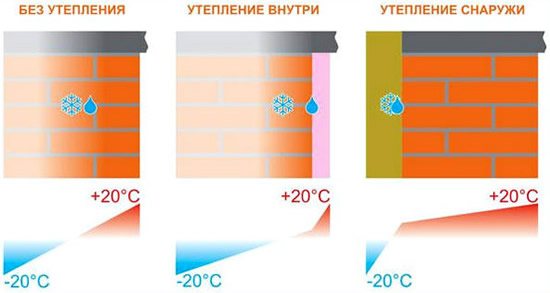

A visual diagram of the work of insulation inside and outside the house. Brick walls without insulation are susceptible to freezing and destruction by moisture.
Insulation can be carried out outside and inside the premises. External insulation is used in cases where the building is old and requires cladding with frame, block or wooden covering. At the same time, the outside insulation is better, more reliable and easier to produce than from the inside. It does not reduce the internal area of the premises, does not require additional ventilation and does not create a "greenhouse" effect inside the premises.
If the house was built recently, the walls are made of expensive and beautiful bricks, or the exterior decoration of the building is prohibited due to the preservation of the architectural appearance of the building, then it is better to use internal insulation. In addition, insulation from the inside is used in cases where it is impossible to insulate outside only one wall of a dwelling in an old apartment building that does not meet modern thermal protection requirements. In this case, external thermal insulation of the whole house is required, since a single external insulation will not be of much use.
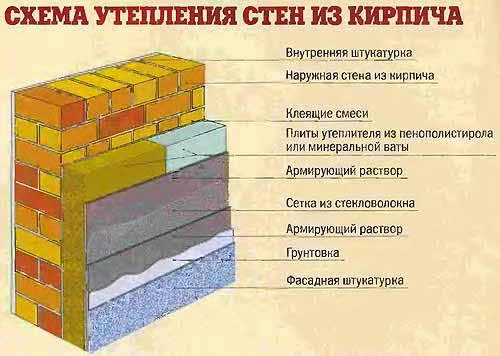

Brick wall insulation scheme from the outside. External insulation is easier and cheaper to carry out, but in practice it is not always feasible.
It should be borne in mind that with internal insulation, the area of the room is reduced, however, this inconvenience is compensated for by other advantages of this method. Thermal insulation of a house from the inside is cheaper than external insulation, and you do not need to obtain any permits to carry out insulation work or invite external specialists.
If a decision is made to carry out internal thermal insulation of the house, then it is necessary to take into account other difficulties arising during the work.
Well brickwork and some features
Brick houses have been built for more than one century. Until recently, the walls were laid in 3-3.5 bricks. In some areas with a particularly harsh climate, the thickness of the walls was brought up to a meter, and the laying of bricks turned into a very laborious and expensive process. A house with 750 mm thick brickwork walls (3 bricks) on a strong foundation, and even requiring exterior decoration, is a very expensive pleasure, not everyone can afford.
Insulated masonry is an innovative technology that made it possible to significantly reduce the consumption of bricks and cement, reduce the load on the foundation, that is, the costs here also decreased.
The brick walls now serve as a frame that provides the necessary strength to the structure. There is no need to make reinforced brickwork - insulation will provide thermal insulation.
The well masonry of brick walls is two parallel walls, rigidly connected to each other and resting on one foundation. In this case, the inner wall is load-bearing, and the outer one is finishing. Therefore, as a rule, red hollow bricks are used for the load-bearing wall, and facing ceramic or clinker bricks for the outer wall. The laying begins in the same way, the usual solid brick from the outer corners.
On the inner sides of the well masonry, longitudinal walls at a distance of 15-50 cm from one another and transverse walls with a distance of 60-120 cm.The minimum possible well is 15x60 cm.
Highlights and nuances
Well masonry has many options. A lighter version - the transverse walls are laid in 1-3 rows. The wall thickness in this case is made in half a brick. The following options - the thickness of the inner walls increases and the transverse walls (dressings) are arranged more often. The walls of the well masonry are fastened using flexible reinforcement joints made of durable steel or plastic. And the toughest option - the dressing is made of light concrete, and from the inside of the frame walls, a part of the brick is released with a console in a checkerboard pattern after 2-3 rows.
Insulation is placed in each well at the end of its distillation. The fixing of insulation for each type is selected in accordance with the project.
The main advantages of well luggage are:
- Significantly lower overall wall thickness and, consequently, weight.
- No additional decorative cladding is required, since the facing brick of the outer wall is already quite decorative.
- Walls can be laid regardless of the season.
- Absolute fire resistance of the structure.
- Inhomogeneous thermal conductivity of materials.
The disadvantages include the laboriousness of installation work and a large amount of hidden operations. The main thing is that it is impossible to control the condition of the insulation and, as a result, repair it.
Sometimes, instead of heaters, air gaps are left in the well masonry of the walls. The width of such a gap should not exceed 6-7 cm. The effectiveness of this method of insulation is much lower, but in some cases it is advisable.
ostroymaterialah.ru
In some newly built buildings, the insulation is placed centrally (in the middle) in the building envelope. With this option, the insulation is very well protected from mechanical damage and there are more possibilities for decorating facades. However, the risk of damage due to moisture is much higher than with external insulation, so the layer structure must be carefully planned and executed without defects.
This construction consists of three layers: load-bearing wall, walls made of facing material and insulationwhich is located between them. The load-bearing and cladding walls are supported on the same foundation. The outer layer is most often made either from facing bricks or from building bricks, followed by plastering, covering with artificial stone, clinker tiles, etc.
Benefits
- beautiful and respectable appearance when using expensive facing materials;
- high durability subject to correct design and qualified installation of the structure.
disadvantages
- high labor intensity of construction;
- low air permeability;
- the possibility of moisture condensation between dissimilar layers of such a wall.
It is very important that all layers of the structure are combined with each other in terms of vapor permeability. Compatibility is determined only by the calculation of the system as a whole.
Underestimating this circumstance can lead to the accumulation of moisture in the interior of the walls. This will create a favorable environment for mold and mildew growth. The insulation from the possible formation of condensation will get wet, which will shorten the service life of the material and significantly reduce its heat-shielding properties.The enclosing structure will freeze through, which will lead to ineffective insulation and may cause its premature destruction.
Types of structures
Typical solutions for layered masonry can be divided into two types: with and without air gap device.
The device of the air gap makes it possible to more effectively remove moisture from the structure, since excess moisture from the load-bearing wall and insulation will immediately go into the atmosphere. In this case, the air gap increases the overall thickness of the walls, and, consequently, the foundation.
Insulation inside the masonry walls
To one degree or another, the problem of steam transfer is relevant for layered masonry with any type of insulation.
Thermal insulation of the structure with mineral wool is the most preferable... In this case, it becomes possible to arrange an air gap between the insulation and the outer wall for better moisture removal from the load-bearing wall and the insulation.
For layered masonry, use semi-rigid mineral wool slab insulation... This will make it possible, on the one hand, to fill in all defects in the masonry well, to create a continuous layer of thermal insulation (the plates can be "squeezed" a little, avoiding cracks). On the other hand, such slabs will maintain geometric integrity (not shrink) throughout their entire service life.
Stone wool TECHNOBLOCK
Mineral wool ISOVER Karkas-P34
Certain difficulties in the use of expanded polystyrene in layered masonry are caused by the low vapor permeability of this material.
Three-layer brickwork with insulation
- The inside of a brick wall
- Mineral wool
- Outside of a brick wall
- Connections
The traditional material for the interior of the walls is solid red ceramic bricks. Masonry is usually carried out on a cement-sand mortar of 1.5-2 bricks (380-510 mm). The outer wall is usually made of facing bricks with a thickness of 120 mm (half a brick).
Perfume
In the case of a system device with an air gap of 2-5 cm wide, for ventilation, air vents (holes) are arranged in the lower and upper parts of the wall, through which vaporous moisture is removed to the outside. The size of such holes is taken at the rate of 75 cm2 per 20 m2 of wall surface.
The upper ventilation ducts are located at the cornices, the lower ones at the plinths. In this case, the lower holes are intended not only for ventilation, but also for water drainage.
- Air gap 2 cm
- Lower part of the building
- Top of the building
For ventilation of the layer in the lower part of the walls, a slotted brick is installed, placed on the edge, or in the lower part of the walls, bricks are laid not close to each other, and not at some distance from each other, and the resulting gap is not filled with masonry mortar.
Establishing links
The inner and outer parts of a three-layer brick wall are connected with each other by special embedded parts - ties. They are made of fiberglass, basalt or steel reinforcement with a diameter of 4.5–6 mm. It is preferable to use fiberglass or basalt-reinforced plastic ties due to the higher thermal conductivity of steel ties.
These connections also perform the function of fastening the insulation plates (the insulation is simply pinned onto them). They are installed in the process of laying in a load-bearing wall to a depth of 6-9 cm in increments of 60 cm horizontally and 50 cm vertically, based on an average of 4 pins per 1 m2.
To ensure a uniform ventilated gap over the entire area of the insulation, fixing washers are attached to the rods.
Often, instead of special ties, bent reinforcing bars are used. In addition to the ties, the outer and inner walls of the masonry can be tied with a steel reinforcing mesh laid vertically every 60 cm. In this case, additional mechanical fastening of the plates is used for the arrangement of the air gap.
Insulation plates are installed with the bandaging of the seams close to each other so that there are no gaps and gaps between the individual plates.At the corners of the building, slabs are toothed in order to avoid the formation of cold bridges.
Insulated masonry technology
- Laying the facing layer up to the level of the ties
- Installation of a heat-insulating layer so that its top is 5-10 cm higher than the facing layer
- Structural masonry up to the next link level
- Installation of ties, piercing them through the insulation
- Laying one row of bricks in the load-bearing part of the wall and in the facing layer
if the horizontal seams of the bearing and facing layers of the wall, in which the ties are placed, do not coincide by more than 2 cm in the bearing layer of the brickwork, the ties are placed in the vertical seam
utepdom.ru
Insulation for brick walls inside masonry
The main difficulty of thermal insulation
It lies in the appearance of condensation between the wall and the insulation. And it doesn't matter which side the wall was insulated from. If the measures are carried out incorrectly, then condensation will appear after a short period of time. The resulting moisture will harm not only the insulation, but also other materials used in the decoration of the room. Firstly, when moisture enters the insulation, its effectiveness as an insulator is significantly reduced. Secondly, condensation causes mold or mildew to appear, which has a negative effect on both the operation of the entire insulation system and the health of people and animals living in the room. Finally, moisture settling on the wall of the house from the inside leads to corrosion of materials, which affects not only the insulation, but also the durability of the building itself.
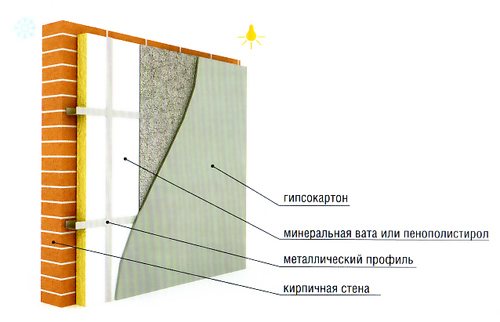

Brick wall insulation scheme from the inside. Before starting insulation, you should consider methods of dealing with condensation.
Therefore, before starting work on the thermal insulation of the room, you should think about how to prevent condensation. Usually, two calculations are made for this: for the required thickness of the insulation and for the location of the dew point (condensation point) in the wall. If the dew point hits the wall, then there will be no problem. If it is located between the wall of the house and the insulation or inside the insulation, then such a room cannot be insulated from the inside. The difference in the temperature of the wall and the construction of the insulation will lead to the fact that the wall freezes harder, condensation forms on it, which will lead to the problems described earlier.
Various materials are used to insulate a room from the inside. The most common methods are insulation with foam or expanded polystyrene, plaster, mineral wool. Less commonly, cork panels, concrete slabs with special heat-insulating fillers, etc. are used for wall insulation. Let's consider these materials in more detail.


